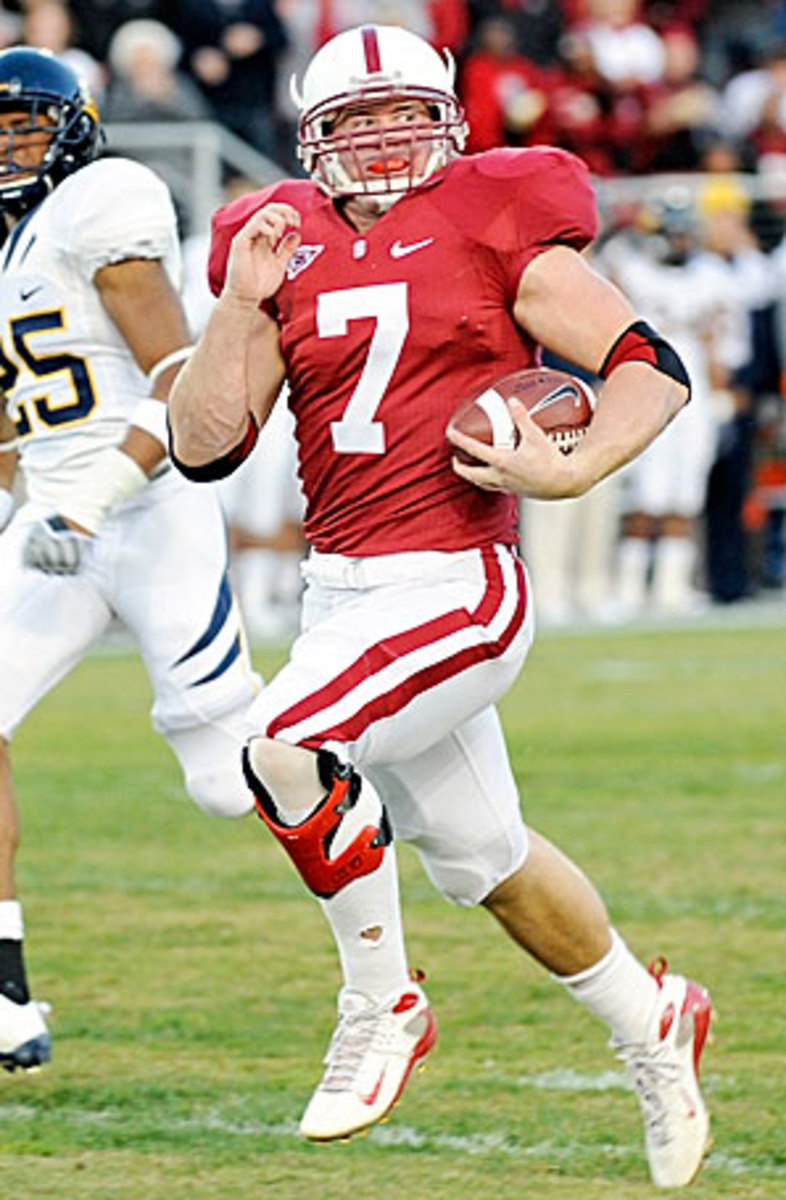White tailbacks out of the running


(Editor's note: This story appeared in the Nov. 30, 2009, issue of Sports Illustrated. The statistics have since been updated.)
They will usually accept the backhanded compliments without complaint: "Hey, you're pretty fast for a white dude." They will smile when they get tagged with a nickname like Eminem or K-Fed. (Get it? They're Caucasian guys trying to do what African-Americans tend to do better.) White running backs will take all the good-natured teasing you've got, and they'll ask for only one thing in return -- the football.
Doesn't seem like much, does it? Just give them the ball and with it the chance to prove that productive rushers come in more than one shade. But coaches don't seem to have that handoff in their playbook. You're more likely to see Bill Belichick dance the hokeypokey on the sideline than find a white tailback in the NFL. There isn't a single white feature back on any of the 32 teams; the Bengals' Brian Leonard leads all white rushers in carries, with 25 (for 67 yards). White running backs break through slightly more often on the college level, where Stanford's Toby Gerhart leads in the nation in rushing -- but there is only one other white back, Nevada's Luke Lippincott, among the top 50 ground-gainers. Of the BCS teams Stanford is the only one whose primary running back is white.
Maybe you're thinking that the racial imbalance is because Caucasian backs just can't keep up. You watch Adrian Peterson and Maurice Jones-Drew and say, "Find me a white runner who can do that." But there's plenty of anecdotal evidence to suggest that white backs haven't been competing just against other players; they've also been battling the perception that they're not cut out for the job. Four years ago Gerhart was a hotshot at Norco (Calif.) High, visiting USC on a recruiting trip with fellow runners C.J. Gable and Stafon Johnson, who are black. The Trojans told Gerhart they would love to have him -- as an outside linebacker or a fullback to block for guys like Johnson and Gable.
That's a little like being told the leading role is going to another actor, but how'd you like to be his bodyguard? Says Norco High coach Todd Gerhart of his son, "Even today with all he's done I had a linebacker coach say to me, 'You give me one year with him, and I'll turn him into Junior Seau.'"
Gerhart eventually got his college chance, but others, like Dillon Romain, are still waiting. Last spring Romain seemed to have the necessary credentials to attract droves of college recruiters. He's big enough (5-11, 210 pounds) and fast enough (4.46 in the 40 according to Scout.com, a recruiting website), and as a senior at powerhouse Don Bosco Prep in Ramsey, N.J., he rushed for 1,435 yards and 25 touchdowns, earning the state's Gatorade Player of the Year award. Each of the previous 10 winners of that honor earned Division I scholarships, including three current NFL players, Broncos quarterback Chris Simms, Bears tight end Greg Olsen and Jaguars offensive tackle Eugene Monroe -- but not Romain. When he received no D-I offers by national signing day, he decided to take a postgraduate year at Blair Academy in Blairstown, N.J.
For those who do reach the NFL, the path doesn't get any easier. In 2003 Brock Forsey was a Bears backup who started one game in place of injured starter Anthony Thomas and was spectacular, rushing for 134 yards and a touchdown on 27 carries. The next week Thomas returned to the lineup and Forsey went back to the bench, getting only three carries. He never started another NFL game. "It's hard to tell exactly what happened," says Forsey, who starred at Boise State and is now an executive at a title and escrow company in Nampa, Idaho. "No one ever said anything about race. But there may be some preconceived notions out there. A white guy from Idaho isn't what you have in mind when you envision an NFL running back."
Evaluating players shouldn't be about what we envision but what we see. That lesson should have been learned from the decades of discrimination against black quarterbacks at colleges and in the pros. Despite the obvious parallels, no one seems to be as concerned that white tailbacks are getting the same treatment. "I did dozens of interviews about the lack of opportunity for an African-American to be a QB back in the 1980s and early '90s," says Richard Lapchick, director of the Institute for Diversity and Ethics in Sport at Central Florida, "but this is only the second time I have been asked about the lack of opportunity for whites to be running backs." Maybe that's because racism isn't the culprit here; it's mostly white coaches and talent evaluators who are choosing black running backs over white ones. But it doesn't make the color line any less real.
It's not that football needs to aim for some acceptable distribution of races throughout the field, and it's not that every white would-be tailback who is passed over or directed to a different position is the victim of stereotyping. It's about equality of opportunity, just as it has always been. The sports world may be enlightened enough not to immediately dismiss the idea of African-Americans as quarterbacks or coaches anymore, but maybe we haven't come as far as we thought. Maybe we've just found a new demographic to discourage. The dashing of dreams is always an ugly thing, no matter what shade the dreamers come in.
